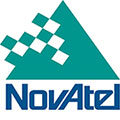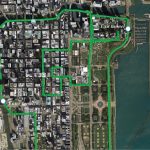 Dr. Andrey Soloviev, Qunav
Dr. Andrey Soloviev, QunavGNSS and inertial technologies have a complicated mutual history.
Once competitors for navigation and positioning applications, they now appear ever more frequently in complementary roles — often within the same solution or system design.
GNSS and inertial technologies have a complicated mutual history.
Once competitors for navigation and positioning applications, they now appear ever more frequently in complementary roles — often within the same solution or system design.
Employing motion sensors (accelerometers), rotation sensors (gyroscopes), and a processing unit that integrates and processes the sensor data, an inertial navigation systems(INS) continuously calculates position, heading, and speed of a moving vehicle, vessel, or aircraft based on dead-reckoning principles.
Before GPS satellites were ever launched, triple redundant INS had become state-of-art technology in commercial and military aircraft. With a set of initial coordinates, pilots could guide their aircraft from one waypoint to the next using an INS to determine aircraft position and velocity.
More recently, automotive engineers have incorporated low-cost inertial technology into car and truck design to improve vehicle stability and control, and to aid on-board navigation systems.
One strength of an INS is its autonomy. Once an INS has been initialized it can operate without depending on external references or information. On the other hand, its dependence on relative positioning makes inertial navigation subject to internal error sources, which may be undetectable without outside aid.
Indeed, the ascendancy of GNSS technology over earlier technologies was foreshadowed in the 1983 KAL 007 incident and its aftermath when a commercial airliner flew off course over Soviet airspace and was shot down. Shortly after the incident, U.S. President Ronald Reagan announced that, following its completion, the Global Positioning System would be made available for civilian use, free of charge, in order to avoid similar navigational errors in the future.
Widespread adoption of GPS eventually revealed the practical limitations of this new technology, too — particularly in places that block or reflect satellite signals: underwater, underground, in steep terrain and urban “canyons,”and inside buildings.
Inertial technology is unaffected by such factors. Consequently, interest in bringing these two technologies together is growing among engineers on both sides of the GNSS/INS divide.
To help explain the state of play in GNSS/INS integration, we turned tonDr. Andrey Soloviev, a part-time research faculty at the University of Florida, Research and Engineering Education Facility, and president of Qunav, a small R&D business enterprise. Previously he served as a senior research engineer at the Ohio University Avionics Engineering Center.
IGM: What seems to be the greatest learning hurdle(s) encountered by product designers/system developers coming from an inertial technology back ground when seeking to integrate GNSS technology? For those coming from a GNSS background who want to incorporate inertial technology?
SOLOVIEV: The greatest learning hurdle for both seems to be the Kalman filter, which is the cornerstone of GNSS/inertial integration. Given the numerous papers, book chapters, and entire textbooks on the subject, the theory may seem overwhelming at first. My personal favorite is “An Introduction to the Kalman Filter” by Greg Welch and Gary Bishop, which enables one to understand the main principles within half a day or less.
Learning inertial navigation and error propagation equations can also be challenging for people coming from a GNSS background. For low-cost inertial applications, inertial mechanization can be simplified quite a bit, as some math-heavy aspects of it (such as transport rate and Earth rate, Coriolis effect and Schuler oscillations) do not really have to be considered. However, implementation of the complete inertial mechanization is quite involved.
For developers with a background in inertial technology, one of the biggest challenges is to understanding principles of GNSS signal tracking. However, this part only needs to be considered when the most advanced forms of the GNSS/inertial integration are pursued.
IGM: What are the most difficult technical aspects of combining GNSS and inertial technologies?
SOLOVIEV: Once the basics of the GNSS/inertial integration are understood (i.e., Kalman filter, inertial navigation mechanization, and error propagation), the difficulties are in nuances such as measurement synchronization, level-arm compensation, and GNSS measurement quality control.
GNSS and inertial measurement processes are generally not synchronized with each other, meaning that receiver and inertial data arrive at different time instances. A common approach is to time-tag inertial measurements using one pulse-per-second outputs of a GNSS receiver and then computationally shift the inertial navigation solution to the time of the GNSS update.
When a GNSS antenna and the inertial measurement unit (IMU) are not collocated with each other (i.e., there is a non-zero lever arm), the IMU and antenna can undergo a (slightly) different motion pattern (for example, during turns). Resultant differences in motion parameters have to be adjusted for before GNSS and inertial measurements are fused.
Finally, when the technologies are combined for GNSS-challenged environments, it is crucial to identify GNSS measurement outliers (mainly caused by multipath) and exclude those from the data fusion. Measurement quality control can be accomplished most efficiently by predicting GNSS measurements values based on the inertial solution; comparing predicted and actual measurements; and, then discarding measurements with large discrepancies
IGM:How do platform dynamics constrain or indicate the choice of inertial solutions?
SOLOVIEV: Platform dynamics influence the choice of inertial sensors as well as navigation algorithms. There are three main aspects. First of all, inertial sensors need to be able to measure the full range of the motion. This includes dynamic range (i.e., maximum values of acceleration and angular rates) as well as frequency bandwidth. Obviously, if the accelerometer measurement range is restricted to 1 g while the actual acceleration can vary in a ± 5 g range, this type of sensor is inadequate for the application in hand.
Bandwidth is another critical aspect of the issue, especially for high-vibration motion scenarios. For instance, if the bandwidth of a gyroscope is limited to 50 hertz, that may not be enough for flight environments where higher-frequency vibrational motion components are normally present.
Next, with increased dynamics, motion-dependent measurement errors become more important. They normally include scale-factor errors and cross-axis sensitivity. As a result, when choosing an inertial measurement unit for high-dynamic applications, the system designer needs to consider scale-factors (both first and second-order) and cross-axis error specifications in addition to drift and noise characteristics that primarily define the performance in low-dynamic scenarios.
Finally, inertial mechanization algorithms have to be designed to accurately reconstruct the motion. For high-dynamic cases (especially those that include high-frequency vibrational motion), this means that compensation of sculling and coning effects have to be incorporated into the inertial mechanization.
IGM:Does the addition of other sensing technology, e.g., LIDAR, seismic sensing, affect the GNSS/inertial system design?
SOLOVIEV: A system can be designed in such a way that the addition of other sensors does not change the GNSS/inertial part. Such a design approach exploits inertial as a core sensor that provides the overall solution (position, velocity and attitude). Other technologies (including GNSS) are used as secondary sensors that supply aiding measurements for reducing the drift in inertial navigation outputs.
When a new sensor is added to the system, the integration filter is expanded to include new measurement observables and new states (if necessary) without modifying previously developed filter components. Of course, when additional sensors are added, it can influence the choice of the inertial measurement unit (IMU). For instance, lower-quality and lower-cost IMUs can be used to maintain a required performance in outdoor urban environments when a LIDAR sensor is added to the GNSS/inertial system.
One in a series of articles sponsored by NovAtel Inc.





